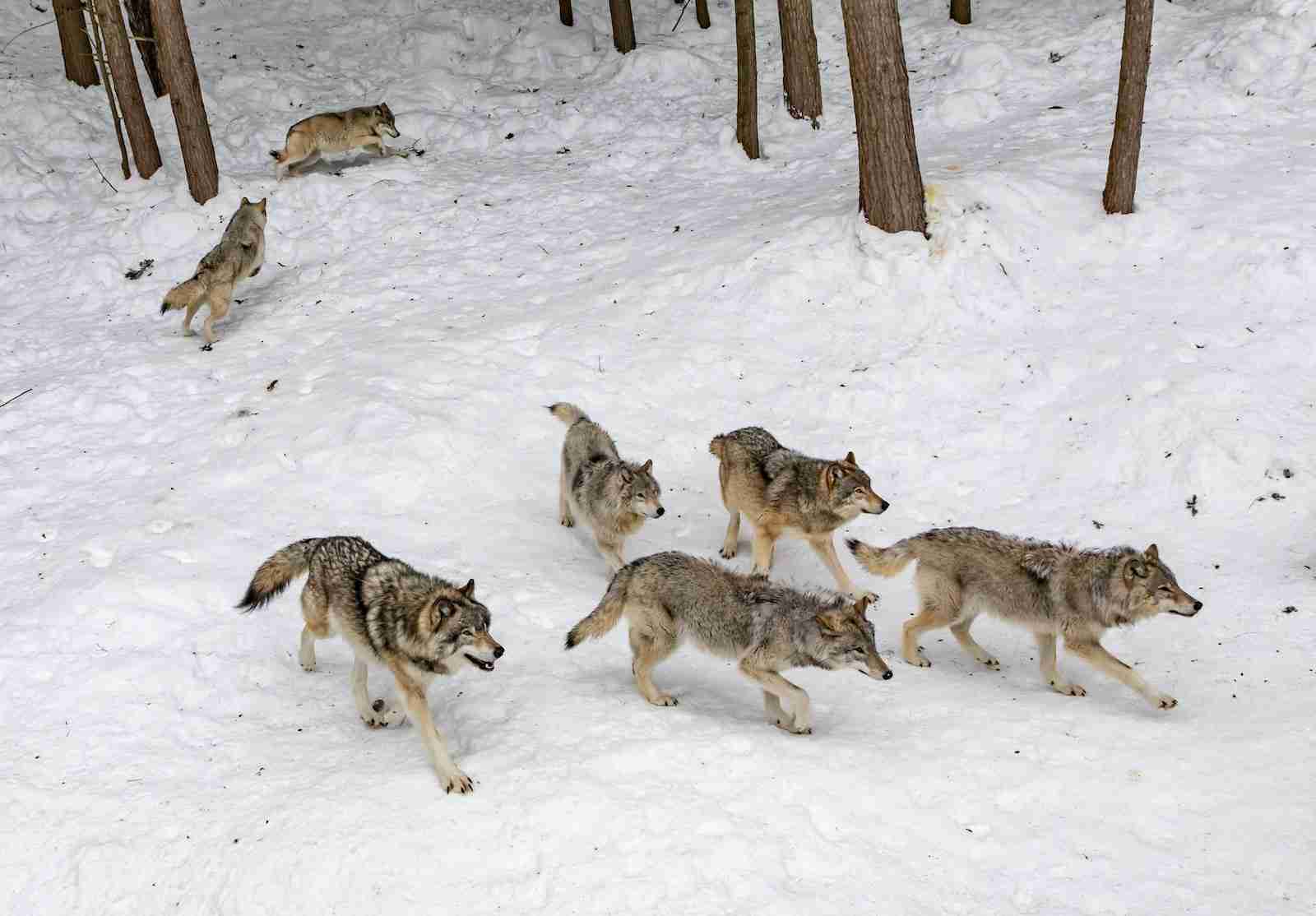24 Fun Facts About Wolves | Journeys of Howling Echoes
1. Wolves primarily eat large herbivores.
Wolves have a hearty appetite and mainly munch on big plant-eaters. Think of animals like deer, elk, and even bison. These giants provide the nutrients wolves need to stay healthy and active.
A single wolf can eat up to 20 pounds of meat in one meal. That’s like a human scarfing down 80 hamburgers at once.
2. Wolves are social animals that live in packs.
Ever heard the saying, There’s strength in numbers? That’s wolves for you. They’re not the loners some movies make them out to be. Instead, they thrive in groups, often called packs.
These packs are like big, furry families, with up to 8 members. Each wolf has a role, from hunting to babysitting the young. Living in packs not only makes hunting easier but also builds strong bonds among members.
3. Wolves communicate with distinctive howls.
Wolves aren’t just howling because they feel like it. Those howls are like their version of a chatroom. They have different tunes and pitches for various messages.
Howls can be heard miles away, making it an effective long-distance call. Fun fact about wolves, Each wolf’s howl is as unique as a human’s voice. So, it’s kinda like each wolf has its signature song.
4. The leader of the pack is called the alpha wolf.
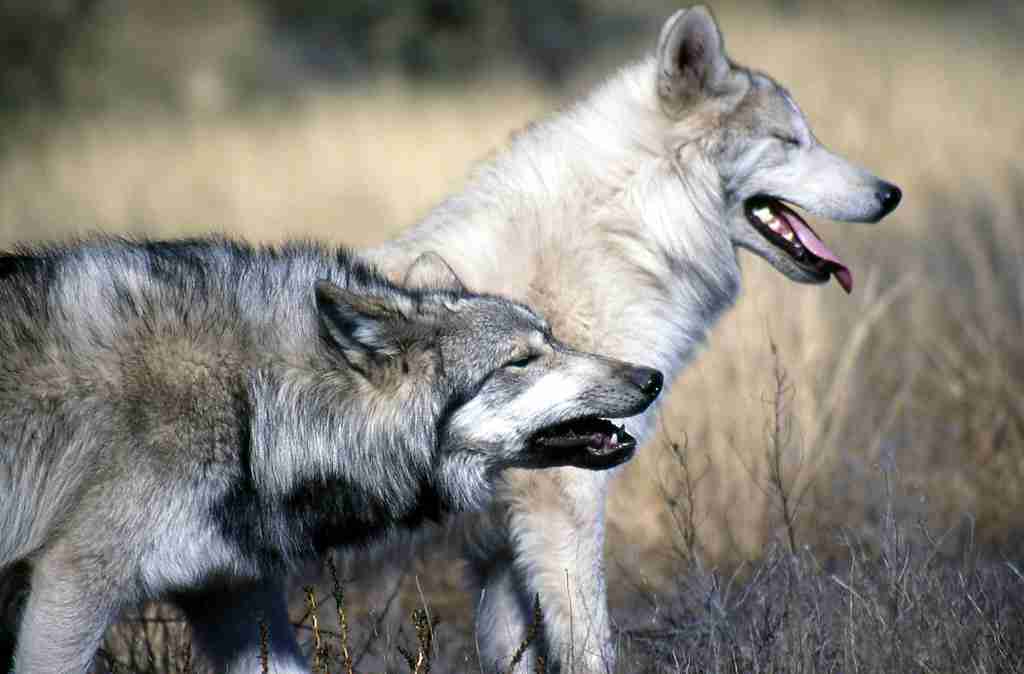
Ever thought of wolves having a king or queen? Well, meet the alpha wolf In every pack, there’s this top wolf, leading the way. They’re the decision-makers, the trendsetters.
But here’s something cool It’s not just one, but a pair of the alpha male and female are like the mom and dad of the group, and they’re typically the only ones having pups.
5. Wolves’ eyes range in color from gold to orange.
Have you ever looked into a wolf’s eyes? They’re mesmerizing Unlike us humans, who mostly have shades of brown, blue, or green, wolves rock a fiery palette.
Their eyes can be a brilliant gold, a burnt amber, or even a glowing orange. This unique eye color adds to their mysterious charm.
6. Wolves can smell prey from over a mile away.
Imagine being able to sniff out your favorite food from a distance. That’s wolves, their noses are like super-powered GPS devices.
If there’s a deer, elk, or any prey hiding even a mile away, a wolf can catch the scent. This nose power is their secret weapon. Out of all their senses, smelling reigns supreme.
7. Wolves can go without food for up to two weeks.
Picture skipping just one meal, and you’re probably already dreaming of pizza, right? But wolves, they’re on a whole different level.
While they’d love a feast every day, sometimes food is hard to come by. But no worries, their bodies are built tough. They can go without chowing down for up to two weeks. It’s like nature’s version of a super diet.
8. The average pack size for wolves is 5-8 individuals.
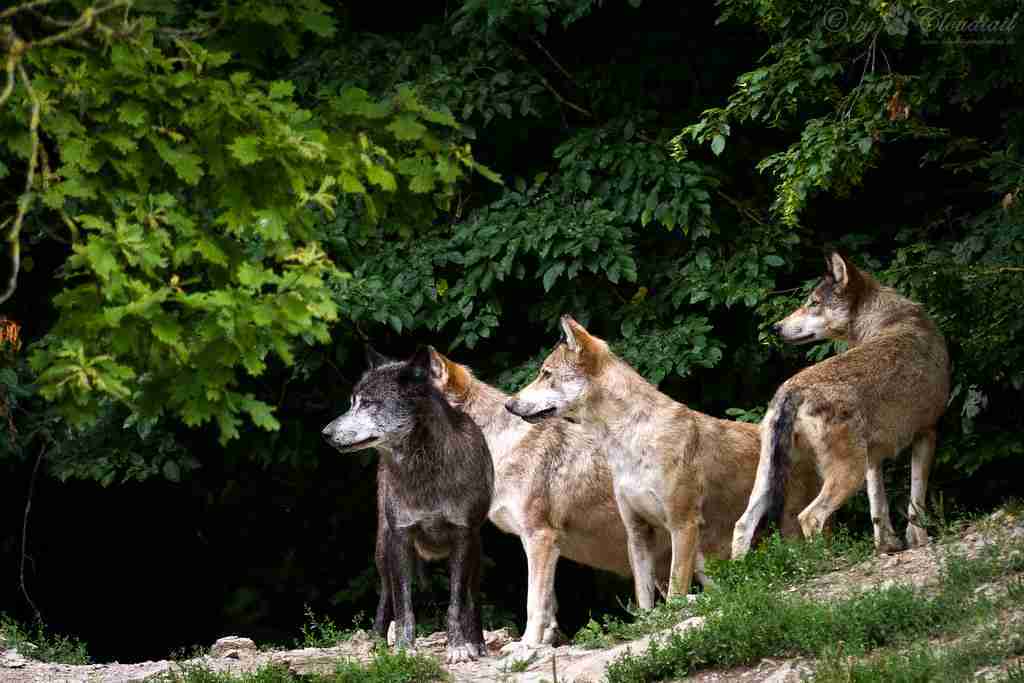
Think of wolf packs as tight-knit squads. These aren’t massive armies, but more like close groups of pals. On average, you’d find about 5-8 wolves in a pack.
This number keeps things manageable and everyone in check. It’s the perfect group size for teamwork, whether they’re hunting, playing, or just chilling.
9. Wolves use their tails to communicate with pack members.
Did you know wolves have their own version of sign language? And guess what? Their tails are the main stars It’s not just for wagging or looking pretty it’s their communication tool.
A raised tail shows dominance, while a tucked one could mean submission. If you ever see a wolf twitching or moving its tail in a certain way, they’re probably sending a secret message to their pals.
10. Wolves have a special bone in their throat called the hyoid, which is one of the fun facts about wolves.
Okay, pop quiz. Ever heard of the hyoid bone? Don’t worry, it’s not a trick question. This unique bone sits in a wolf’s throat and it’s super special.
Why? Because it helps them howl it supports the tongue and larynx, letting wolves belt out those haunting, beautiful howls. Without the hyoid, the wild wouldn’t sound the same.
11. Wolves occasionally form alliances with ravens, who alert them to carcasses.
Here’s a fun fact about wolves, Ravens and Wolves, two very different creatures, sometimes team up It’s like an unexpected buddy movie in the wild. Ravens have sharp eyes and can spot a carcass from the sky.
When they do, they’ll often make a ruckus to grab a wolf’s attention. Why? Because once the wolves come and open up the tough hide of the carcass, it’s easier for ravens to swoop in for a bite.
12. Wolves have a double layer of fur to stay warm.
Wolves come equipped with nature’s perfect insulation. Their fur has a dual-layer system.
The outer layer wards off rain and snow, while the snug inner layer conserves warmth, ensuring they stay toasty in chilly conditions.
13. Wolves have a lifespan of 10-14 years in the wild.
Life in the wild isn’t easy, but wolves have a good run. On average, they live to be 10-14 years old when roaming free. It’s a life filled with adventures, hunts, and the ever-changing seasons.
While it might not seem long compared to our human years, for a wolf, it’s a lifetime of experiences in the vast wilderness.
14. Wolves’ have 42 sharp teeth that are perfect for tearing meat.
Wolves don’t just have any regular set of teeth they boast an impressive collection of 42. Each tooth has a role to play, from cutting and tearing meat to grinding down food.
It’s like having a multi-tool in their mouths, ensuring they’re ready for any culinary challenge the wild throws their way.
15. Wolves’ sense of smell is 100 times greater than humans.
Let’s talk superpowers. A wolf’s nose is nothing short of amazing. Their sense of smell dwarfs ours, being about 100 times more potent.
So, while we might enjoy the scent of fresh-baked cookies from the next room, a wolf could potentially detect it from miles away.
It’s this extraordinary olfactory ability that aids them in hunting and navigating their vast territories.
16. Wolves are known to cover up to 30 miles in a day.
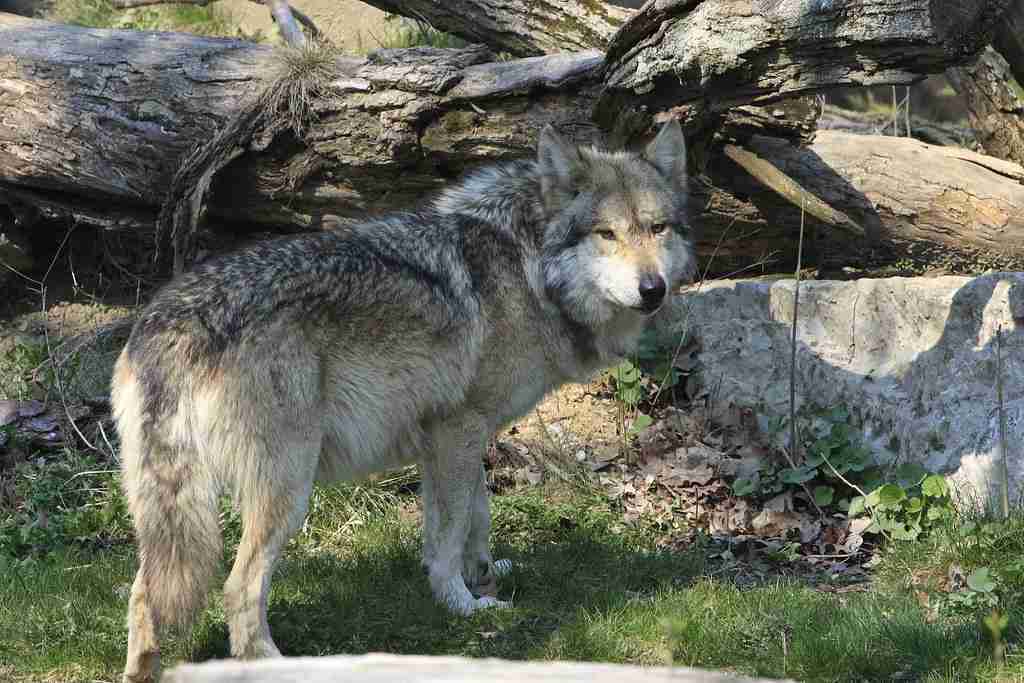
Ever feel exhausted just thinking about a 5-mile run? Wolves would probably laugh at that. These tireless travelers can cover a whopping 30 miles in just one day.
Whether they’re hunting, exploring, or simply relocating, their strong legs and enduring stamina make such journeys possible. In wolf terms, they’re the ultimate marathon runners of the wild.
17. Wolves’ howls can last from 3 to 11 seconds.
You might think of a wolf’s howl as a brief, fleeting sound, but in reality, it’s a drawn-out serenade. These howls can stretch anywhere from 3 to a whopping 11 seconds.
And here’s the kicker every wolf has its own distinct howl. It’s as individual as our voices, making it possible for pack members to identify each other just by listening.
18. Wolves are excellent swimmers.
Wolves aren’t just masters on land they’re pretty slick in the water too. While we might not often picture them taking a dip, wolves are, in fact, excellent swimmers.
Whether it’s crossing rivers in search of prey or simply cooling off during a hot day, they navigate the water with grace and strength, proving they’re versatile in more ways than one.
19. Wolves shed their fur once a year, during spring.
Springtime is a bit like a makeover season for wolves. As the weather warms up, they shed their thick winter coats in favor of a lighter one.
It’s their way of staying cool and comfortable. So, if you ever come across tufts of fur in the wild during spring, it might just be a wolf’s discarded winter wardrobe.
20. Wolves’ saliva is believed to have antibacterial properties.
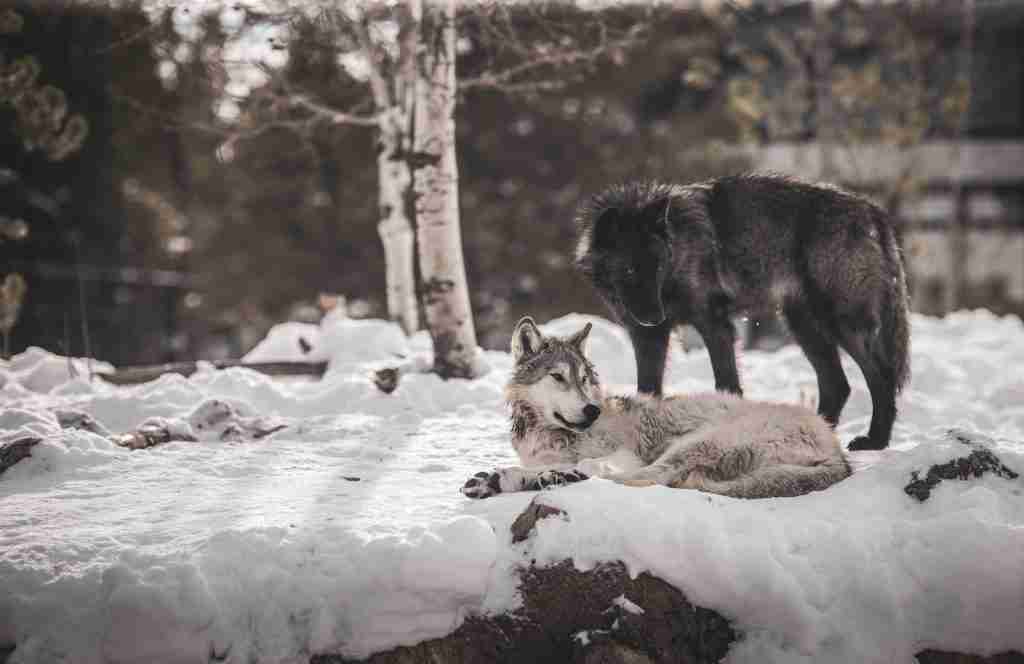
Want to hear a weird fun fact about wolves, while you might not think of wolf drool as anything special, it’s believed to be a mini medicine cabinet. Wolves’ saliva is thought to have antibacterial properties.
This helps them keep wounds clean and ward off infections, a handy natural remedy when living in the rugged wilderness. Mother Nature sure knows how to equip her creatures.
21. One of the fun facts about wolves is that they are crepuscular, most active at dawn and dusk.
Ever notice how some moments during the day feel just perfect for an activity? For wolves, dawn and dusk are their prime times. Being crepuscular means they’re most active and alert during these twilight hours.
It’s a strategy to avoid the full heat of the day and capitalize on the cooler temperatures, making their hunts more efficient.
22. Wolves have a third eyelid called a nictitating membrane.
Here’s a little eye trivia about wolves they have a secret weapon called the nictitating membrane. It’s a third eyelid that sweeps across their eye, providing protection and moisture.
This membrane is translucent, allowing them to see even when it’s drawn across. So, it’s like they have built-in goggles to safeguard their peepers during rough and tumble activities.
23. Wolves are fiercely loyal and will often risk their lives for the safety of their pack members.
Loyalty isn’t just a human trait, wolves embody it wholeheartedly. Their bond with pack members is incredibly strong.
In times of danger, a wolf won’t think twice about stepping in, often risking its own life to ensure the safety of its family.
24. Dogs are descendants of wolves.

If you’ve ever looked into a dog’s eyes and felt a connection to the wild, there’s a reason for it. Dogs, our most loved four-legged companions, trace their lineage back to wolves.
Thousands of years of domestication have turned them into the varied breeds we know today, but deep down, the spirit of the wolf still echoes in their genes.
FAQs
Wolves, due to their wild nature and instincts, are not typically tamed in the same way as domestic dogs. While some individuals might have success raising wolf pups in captivity and forming a bond, these wolves usually retain many of their natural behaviors and instincts. This is in contrast to dogs, which have been bred for generations to be more compatible with humans.
Yellowstone National Park is home to the gray wolf (Canis lupus), specifically the Northern Rocky Mountain subspecies. These wolves were reintroduced to the park in the mid-1990s after being absent for decades due to human activities. The reintroduction aimed to restore ecological balance and control the population of elk and other prey species.
Wolves, like many animals, sleep in various positions. They can be found sleeping on their sides, curled up, or even lying flat on their bellies. Their choice of sleep position depends on their comfort and the weather. In colder conditions, they might curl up to conserve body heat. Wolves are vigilant even while sleeping, often choosing safe spots where they can easily detect approaching danger.
Wolves howl for several reasons. One main purpose is communication within the pack, helping them locate each other and maintain their social bonds. Howling also marks territory, warning other wolf packs to stay away. It’s a common practice during dawn and dusk when they’re most active. Howling can serve as a rallying call before a hunt, helping coordinate pack members.
Wolves are generally shy and avoid humans. Wild wolf attacks on humans are extremely rare. Wolves prioritize their natural prey and don’t see humans as food sources. However, in very rare cases, where wolves have lost their fear of humans due to being habituated or fed by them, there have been isolated incidents.

